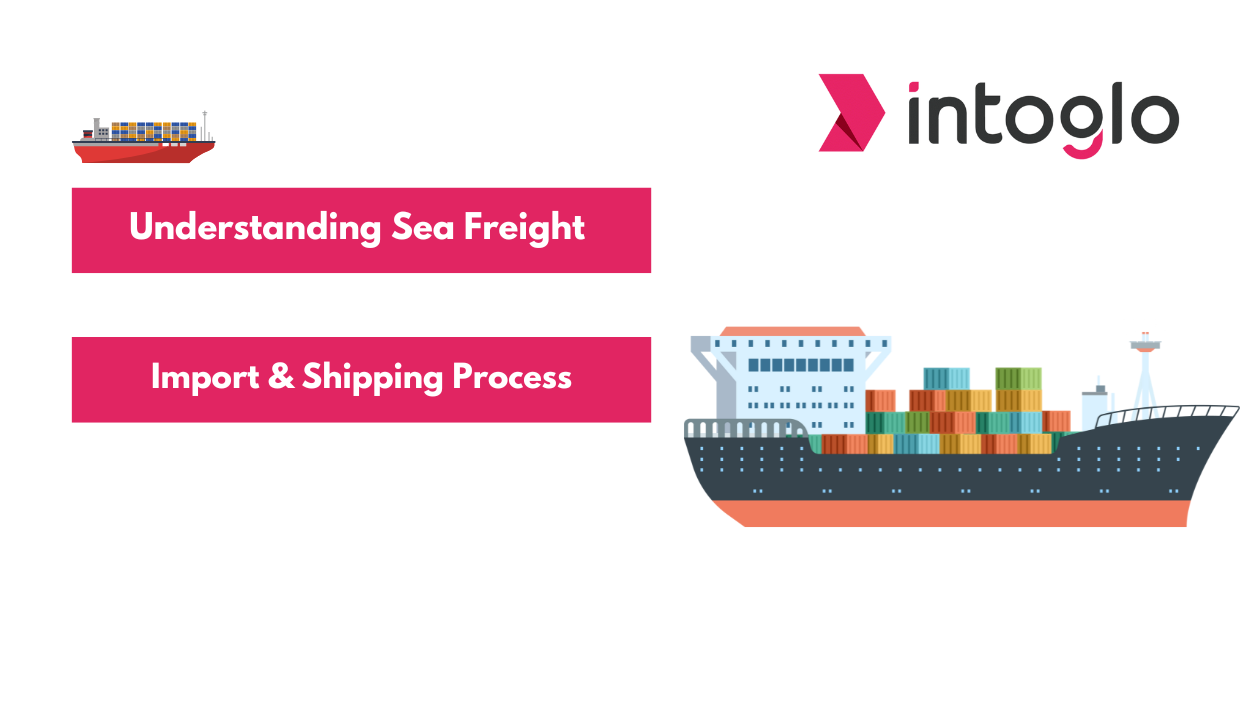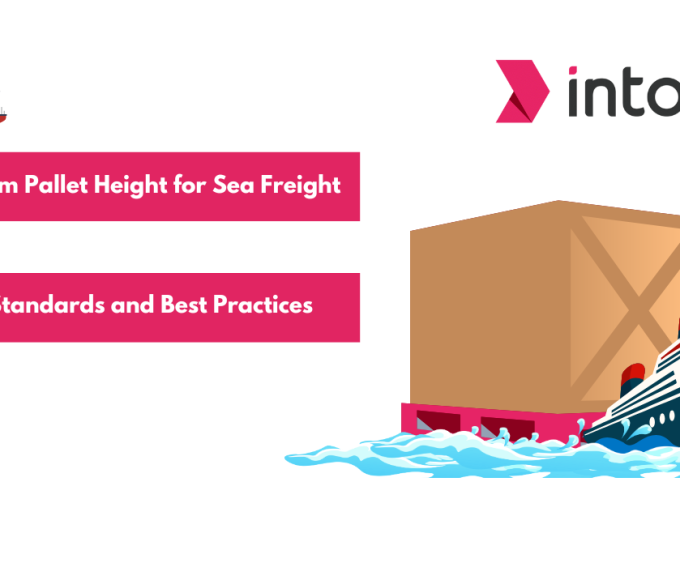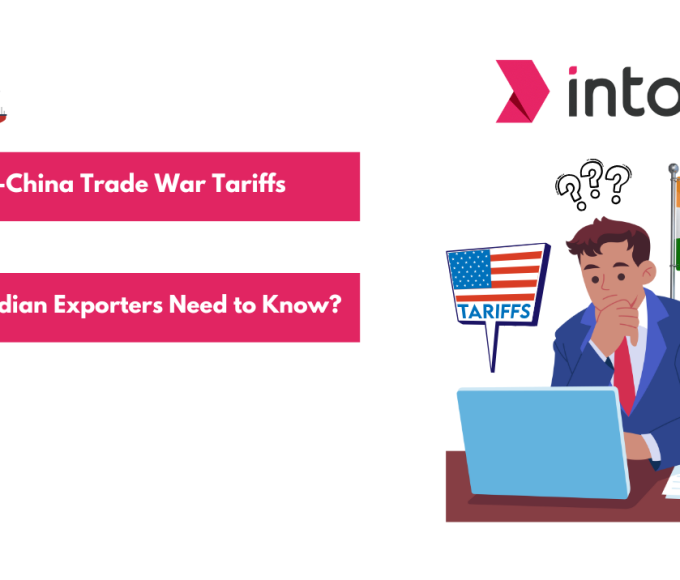Understanding the sea freight import and shipping process is essential for exporters aiming to ensure the smooth transportation of goods across international borders. Sea freight, also known as ocean freight, refers to the process of transporting goods via cargo ships.
It offers a cost-effective and reliable method for large volumes of goods. In the first half of 2024, global container volumes hit 15.7 million TEUs in June, marking a 6.3% increase compared to June 2023 and a 7.1% rise year-to-date, highlighting the massive scale and growth of ocean freight over the past few years. However, the process can be complex, involving several key stages such as transporting goods to the port, preparing documentation, clearing customs, and managing delivery logistics.
This article will cover the steps involved in sea freight import, helping you understand the crucial details involved, from shipment preparation to final delivery, ensuring your goods arrive on time and in perfect condition.
What is Sea Freight?
Sea freight is the process of transporting goods via cargo ships across international waters. This method is popular for its cost-effectiveness, especially when shipping large quantities or heavy items. Goods are typically loaded into containers, which are standardized units designed to fit various types of cargo.
The most common container sizes are 20-foot and 40-foot containers, with the 20-foot container typically carrying about 25-30 cubic meters of cargo, and the 40-foot container accommodating about 55-60 cubic meters. These containers are used to securely transport everything from raw materials to finished products, ensuring goods arrive safely at their destination. While sea freight takes longer than air freight, it offers significant savings, making it the ideal choice for non-urgent shipments.
To fully understand the logistics of sea freight, it’s important to grasp the concept of INCOTERMS (International Commercial Terms). These terms outline who handles what in international shipments, helping avoid costly misunderstandings. Check out our blog on “What are INCOTERMS and How Do They Work?” for more insights.
How Long Does Sea Freight Take?
The time it takes for sea freight to reach its destination varies based on several factors, including the departure and arrival ports, weather conditions, and the specific shipping route. On average, sea freight can take anywhere from 10 days to several weeks.
- Asia to the U.S.: Typically takes 30 to 40 days.
- Europe to the U.S.: Typically takes 20 to 30 days.
- Factors Affecting Transit Time:
- Port congestion
- Customs procedures
- Unloading schedules
One of the biggest reasons for delays in sea freight shipments is the involvement of multiple intermediaries, which can add extra time and costs.
How Intoglo Helps:
- No Middleman: Intoglo eliminates the need for agents, reducing unnecessary delays and costs.
- Direct Connections: Works directly with shipping lines, truckers, and customs brokers to ensure a smooth, streamlined process.
- Efficient Experience: Avoid hidden charges and delays, ensuring faster and more reliable delivery from customs clearance to final destination.
By choosing Intoglo, you can experience a more efficient sea freight process without unnecessary delays.
Steps in the Sea Freight Import Process
The sea freight import process includes a series of steps that help ensure goods are moved smoothly from the origin port to the destination. Each step plays a crucial role in maintaining the timeline and efficiency of the shipment. Here’s a breakdown of the key stages:
Step 1: Export Haulage
The first step involves transporting goods from the exporter’s warehouse to the port. This typically requires trucking or rail transport, ensuring that the cargo is safely delivered to the port for loading.
Step 2: Customs Clearance at Origin
Before shipment departs, customs authorities at the origin country will inspect and verify that all export documentation is correct. This ensures that the goods comply with the country’s export regulations and are cleared for shipping.
Step 3: Loading and Departure
Once the goods are cleared, they are loaded onto the cargo ship. This involves securing the cargo in containers and ensuring they are packed properly to prevent any damage during transit before the ship departs for its journey.
Step 4: In-Transit Updates
Throughout the journey, the shipment is tracked to provide regular updates on its status. These updates are crucial for keeping all parties informed about any potential delays or changes to the shipping schedule.
Step 5: Arrival at Destination Port
When the ship arrives at the destination port, unloading begins. This step involves offloading the containers and storing them in a safe location at the port until they are ready for customs clearance.
Step 6: Customs Clearance at Destination
Upon arrival, the goods must go through customs at the destination port. This process involves checking that all import regulations are met, and the necessary duties and taxes are paid before the goods can be released.
Step 7: Transport to Final Destination
Once customs clearance is complete, the cargo is delivered to its final destination. This step usually involves local transportation by truck or rail, providing the goods to the recipient’s warehouse or facility.
For a more seamless and cost-effective experience, Intoglo streamlines the FCL shipping process by working directly with shipping lines, truckers, and customs brokers, eliminating the need for intermediaries. This direct approach ensures faster shipping times, fewer delays, and transparent pricing, making it easier to manage your ocean FCL shipments from India to the USA.
Suggested Read: Understanding FCL Shipping: Containers, Prices, and Planning Process
Advantages and Disadvantages of Sea Freight
Sea freight is a popular choice for shipping goods internationally, especially for large volumes or bulky items. While it offers several benefits, it’s important to understand its limitations as well. Here’s a look at the key advantages and disadvantages of sea freight:
Advantages of Sea Freight
- Cost-Effective for Large Shipments: Sea freight is a cost-effective option for bulk/large quantity shipment, if compared to air freight. As the volume of goods increases, the cost per unit drops considerably, making it an excellent choice for bulk shipment.
- Capacity for Bulky Goods: Sea freight can accommodate heavy and oversized cargo that may not fit in other transport methods. Shipping containers are available in different sizes, including 20-foot and 40-foot containers, allowing flexibility for large shipments.
- Environmental Impact: When compared to air freight, sea freight is more environmentally friendly. It generates less carbon dioxide per ton of cargo shipped, making it a more sustainable option for businesses concerned about their environmental footprint.
- Global Reach: Sea freight provides access to ports around the world, making it a great option for international trade. Nearly every country with a coastline has a major port, ensuring global connectivity.
| At Intoglo, we have designed our FCL service to further reduce the environmental impact of shipping. Calculate Carbon Emissions For Your Shipment Here. |
Disadvantages of Sea Freight
- Longer Shipping Times: A primary drawback of sea freight is its slower transit time in comparison to air freight. Depending on the origin and destination, shipments can take several weeks to arrive, making them unsuitable for time-sensitive deliveries.
- Port Congestion and Delays: Sea freight shipments are subject to potential delays caused by port congestion, bad weather, or strikes at major shipping hubs. This can result in longer waiting times for goods to be unloaded and processed.
- Limited Accessibility: While sea freight offers global reach, it is limited to ports. If your destination is inland or lacks access to a seaport, you’ll need additional transport, such as trucks or trains, which adds extra time and cost to the overall shipping process.
- Customs and Regulatory Issues: Navigating customs clearance at both the origin and destination can sometimes cause delays, especially if documentation is incomplete or if goods are subject to import restrictions. Missteps in regulatory compliance may also lead to penalties or the seizure of goods.
Sea freight is an excellent choice for large shipments, but it comes with trade-offs like slower transit times and potential delays at ports. By weighing these pros and cons, exporters and importers can make informed decisions that best suit their shipping needs.
Suggested Read: How To Choose The Best Freight Forwarder For FCL DDP Shipments?
What are the Costs of Sea Freight?
Sea freight costs can differ greatly based on various factors such as the type of cargo, the distance between the origin and destination, and the chosen shipping route. Important elements that affect the total cost include:
- Shipping Rate: This is the basic cost of transporting goods by sea. It is usually determined by the size and weight of the shipment, as well as the type of container used (e.g., 20-foot or 40-foot container). Larger, heavier shipments will naturally incur higher shipping rates.
- Fuel Surcharge: Shipping companies often add a fuel surcharge to cover the fluctuating cost of fuel, which can change over time. This surcharge is generally applied as a percentage of the shipping rate and can influence the total cost of the shipment.
- Port Fees: Ports charge fees for handling and processing shipments, including loading and unloading cargo, storage, and security. These fees can vary based on the port’s location and the specific services required.
- Customs and Duties: Import duties and taxes, paid to the destination country’s customs authorities, can add to the total cost of sea freight. These costs depend on the type of goods being imported and the regulations in place at the destination.
- Insurance: Many businesses choose to insure their shipments to protect against potential damage or loss. Insurance costs vary based on the value of the goods being shipped and the level of coverage required.
- Additional Services: Additional services like warehousing, packaging, or special handling (e.g., temperature-controlled containers) can add extra costs to sea freight. These services are typically optional but may be necessary depending on the nature of the cargo.
Although sea freight provides a budget-friendly option for large shipments, it’s important to take these factors into account when planning your transportation costs. Each component can impact the overall cost, so understanding all the elements involved is crucial for effective planning.
Get a free quote for your next shipment! Contact us today to get a detailed breakdown and start planning your shipment easily!
Conclusion
Understanding the sea freight import and shipping process is essential for smooth, efficient international trade. Mastering each step, from export haulage to customs clearance and final delivery, can avoid delays and extra costs. Having a reliable logistics partner like Intoglo can significantly ease this process.
Intoglo offers seamless, door-to-door cross-border logistics from India to the USA, eliminating middlemen and unnecessary delays. Here’s how Intoglo stands out:
- Direct Partnerships with shipping lines, truckers, and customs brokers for a streamlined process.
- Instant Rates for full container loads from India to the USA.
- Global Team Support in both the India and USA time zones.
- End-to-end Shipment Visibility is available through Glotrack, with WhatsApp updates.
- Transparent Pricing, with no hidden charges
- AI-Based HTS Code Scanner for accurate classification of goods.
- In-House Compliance and Pre-Screening to ensure hassle-free customs clearance.
- Extensive Warehouse Network has over 50 locations across the USA.
- Customs Bond Services for USA exporters, ensuring smooth import processes.
- Insurance Options for cargo protection are available upon request.
Intoglo’s comprehensive services, including full transparency and real-time tracking, ensure your FCL shipments are managed efficiently and securely.
Get in touch today and start your seamless shipping journey from India to the USA!









Leave a comment